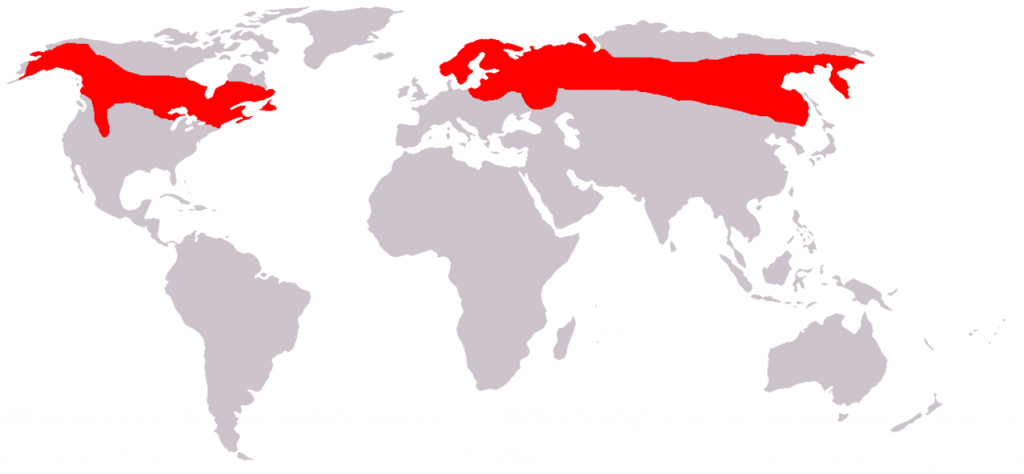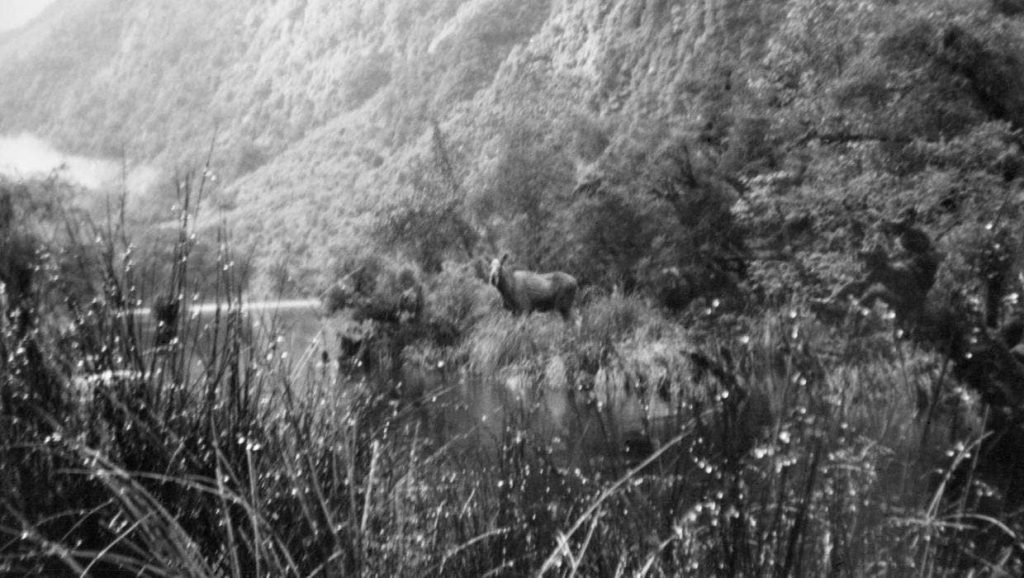The Loch Ness Moose-ster?

If you spend a lot of time hiking through the forests of the United States and Canada — and in particular, in the Pacific Northwest — chances are, you’ll never come across the ape-like creature known as Bigfoot or Sasquatch, and you’ll not get the reward money. Similarly, if you traverse the Himalayans, you’re not going to find the Yeti, a/k/a the Abominable Snowman, and you won’t get that bounty either. And if you’re visiting the watery inlets of the Scottish Highlands, you’ll not see the Loch Ness Monster — and again, no reward for you. There’s a very good reason you’ll miss all of these creatures: they don’t exist.
Moose, on the other hand, definitely do exist. They live in the red regions on the map, above. They do not, however, live in New Zealand. But if you get a picture of one there, it may be worth $100,000.
And unlike Bigfoot, the Yeti, and the Loch Ness Monster, you may actually have a chance at cashing in.
In 1901, William McKinley, the American President, was assassinated, and Theodore Roosevelt, his Vice President, assumed the responsibilities of the office. Roosevelt, being an avid outdoorsman leveraged his love of nature when it came to diplomacy. In or around 1905, he gifted some moose to New Zealand, and in 1910, ten such moose were released in the Fiordland region in the southwest of the country. (Here’s a map; it’s the red-flagged location.) According to the New Zealand Herald, “the Government and Tourist Department of the day hoped they would form the genesis of a future sporting resource,” and for a while, it probably worked — “over the years,” the Herald continues, “several were shot by trophy hunters in Fiordland.” But a half-century later, the moose population in Fiordland seemed to disappear — the last successful moose hunt in the region was in 1952, and the image below was captured that same year. But no one has seen a moose there since.

Or, at least, no one can prove having seen a moose in Fiordland over the last seventy years. Rumors, though, are abundant. Many explorers claim to have seen the creatures stomping around the mountainous forests and the fjords (or fiords). In 2005, there were even some unsubstantiated DNA tests that suggested that moose still made Fiordland their home.
In 2011, a New Zealand clothing company called Hallenstein Brothers decided to turn the moose rumors into a marketing campaign. According to the Otago Daily Times, the company partnered with a long-time moose hunter named Ken Tustin in hopes of finding the elusive (and potentially no-longer-present) creatures. Tustin had spent decades looking for moose, setting up cameras throughout the region, as seen here. But ultimately, he was with nothing to show for it (except for a book about his adventures) and wanted more eyes — and publicity — for his search; Hallenstein wanted more eyes on their shirts. So the company hired Tustin to be the face of their moose-finding advertising campaign and offered up a bounty: AU$100,000 (about $75k US) for a photo of a moose taken in Fiordland.
The campaign didn’t yield a moose photo and the increase of shirt sales, if any, has gone unreported. The lack of bounty hasn’t gotten people to give up the search, though. As recently as March of 2020, a 24-year-old helicopter pilot claimed to have seen on in the area, but being in a helicopter, didn’t have a chance to get a photo. The search for the moose continues.
Bonus fact: Maybe the moose disappeared because of killer whales? It’s unlikely, but arguably possible. Despite the fact that moose are land animals and orcas killer whales are, well, obviously not, the latter is a natural predator of the former — mostly because orcas will eat whatever swims in their general direction. Per one nature site, while not a common occurrence, “orca killer whales attack moose off the coast of Canada and Alaska. While the moose swims between many of the islands looking for food, they end up becoming the food of the orca.”
From the Archives: The People Who Protect Chewbacca: Why it’s hard to be a Wookiee in an area of Bigfoot fans.
